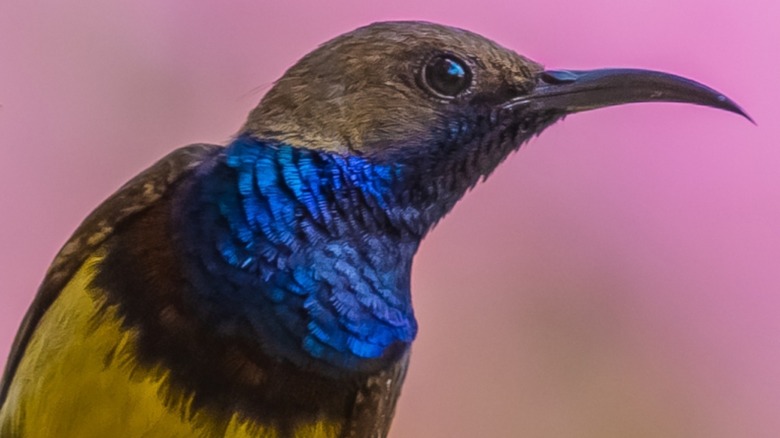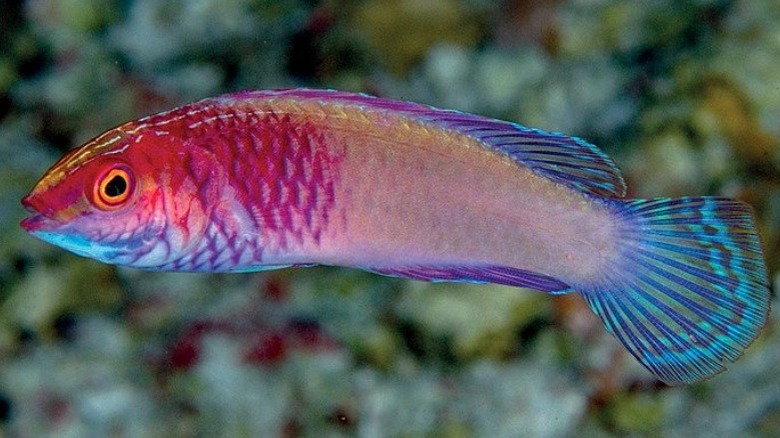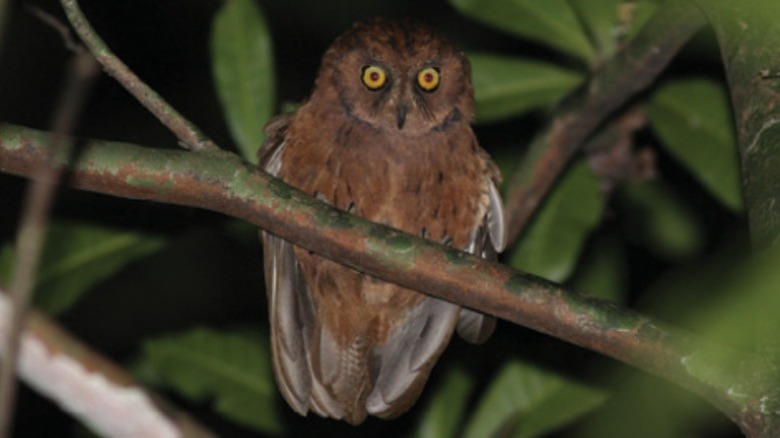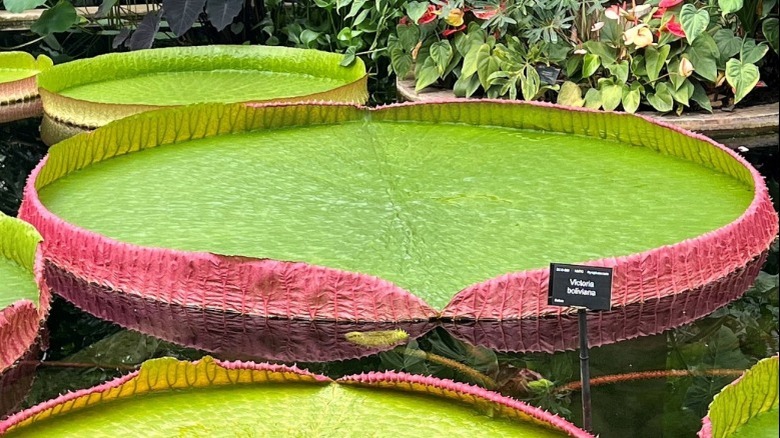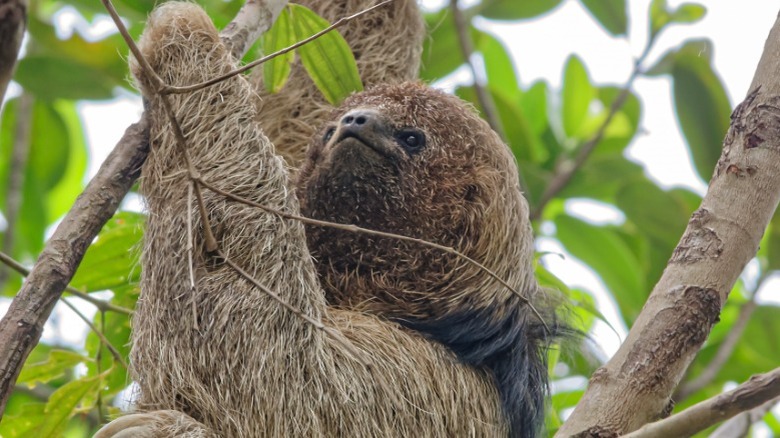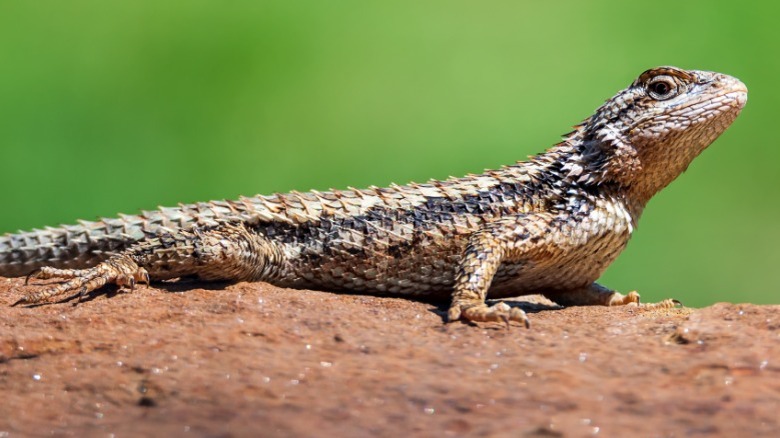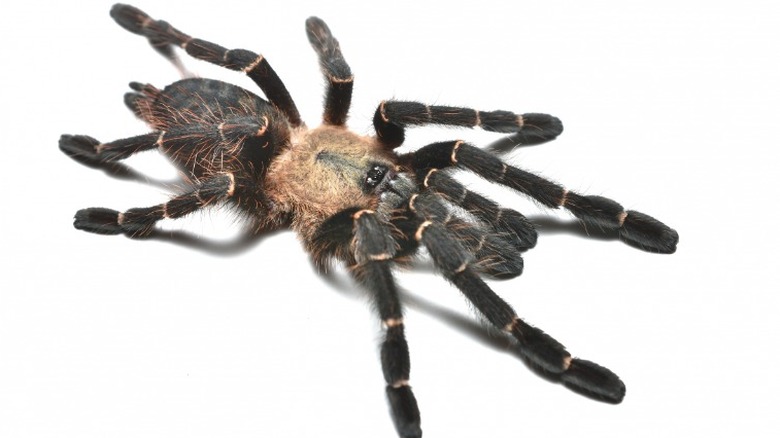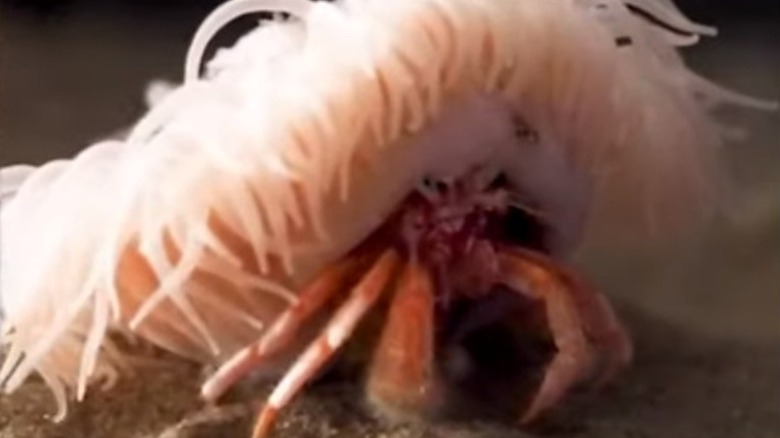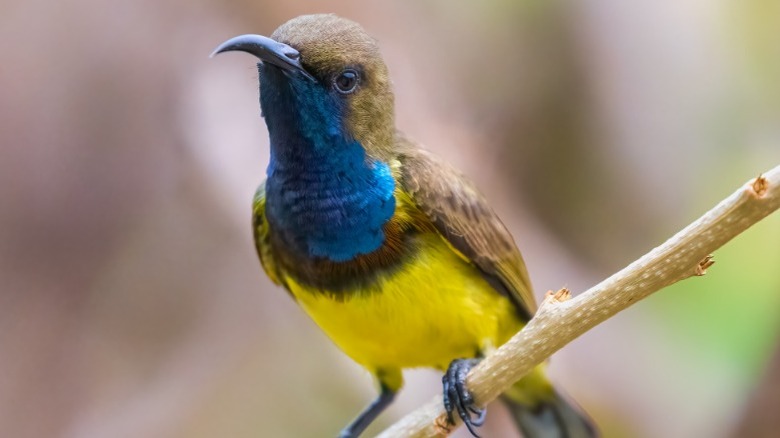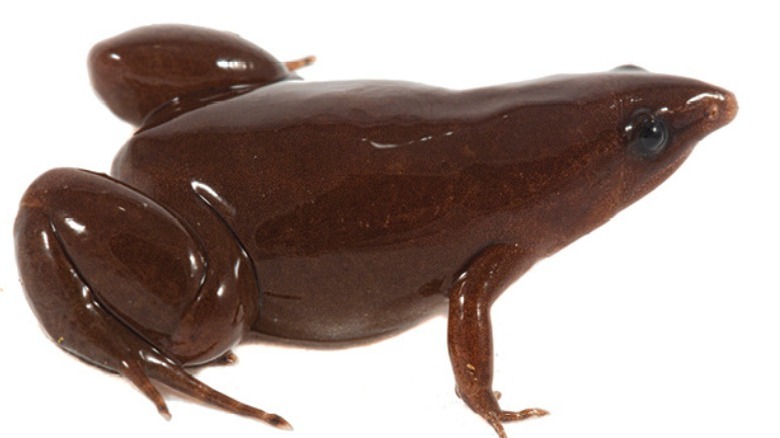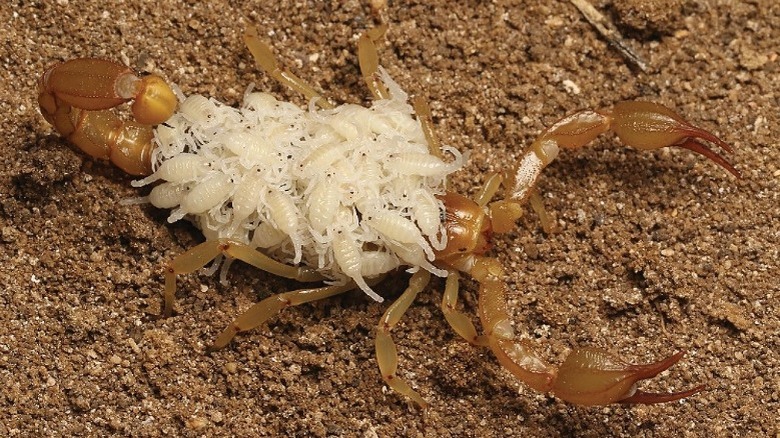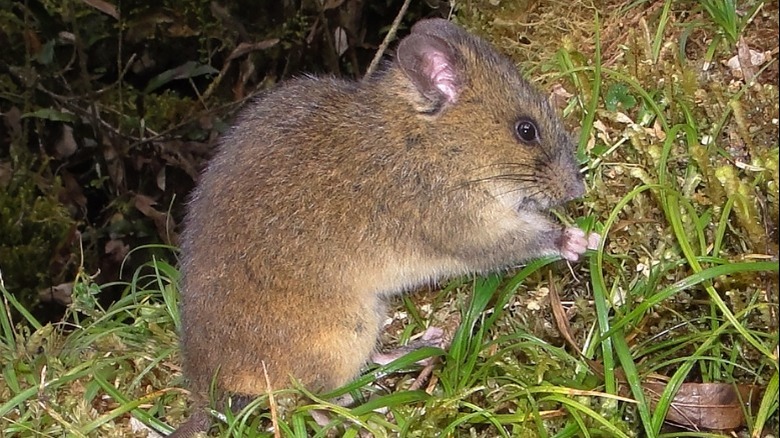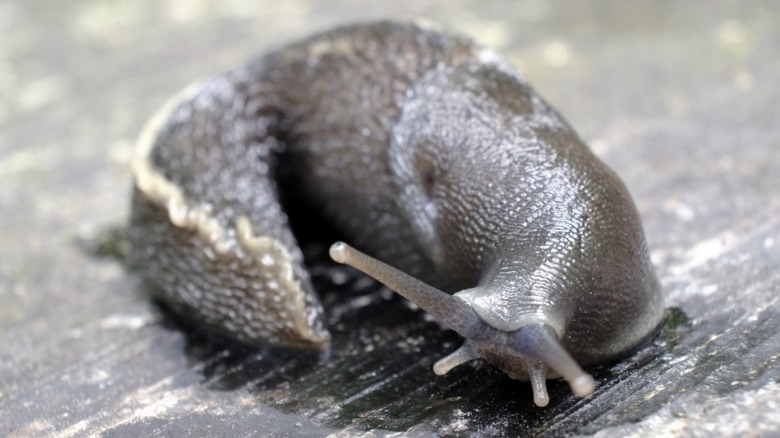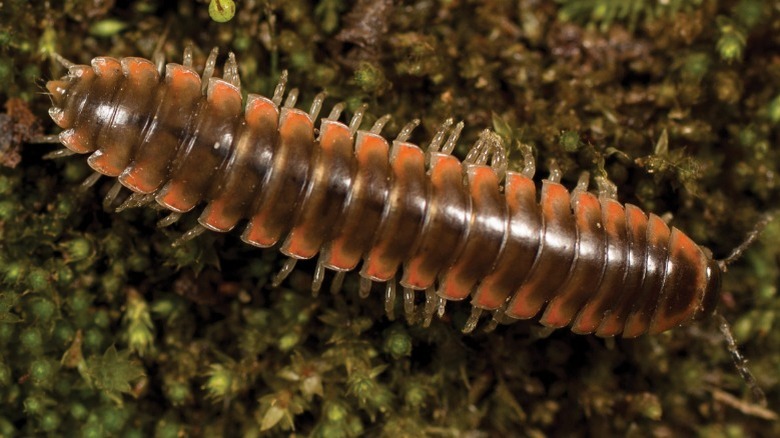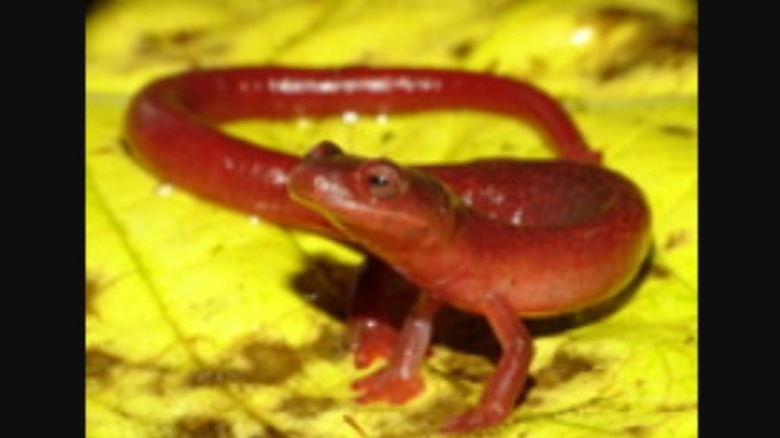The Most Fascinating Species Discovered In 2022
The diversity of life on our planet is astounding – and we've barely even tapped the surface of what's out there. According to a 2011 study published in PLOS Biology, scientists believe that there are around 8.7 million undiscovered species on Earth, with 2.2 million of these living in the world's oceans. As Smithsonian Magazine notes, only around two million species have been identified and described. This means that 86% of the world's living eukaryotes – that is, plants, animals, fungi, algae, and protists (per Nature) – remain unknown to science.
Many of these mysterious species live in the sea, which in some ways remains as foreign as another planet. Scientists are doing their best to describe as many of Earth's species as possible, but time is running out. As Smithsonian Magazine notes, Earth is currently experiencing its sixth mass extinction, set in motion about 10,000 years ago by changing climate and human activities. And as mankind's population grows, biodiversity continues to decline.
According to the Natural History Museum, habitat destruction, pollution, the introduction of invasive species, and unsustainable use are the main drivers of modern extinction. If current trends continue, scientists estimate that 75% of Earth's species will go extinct within the next century (per Smithsonian Magazine). Luckily, genetic technology has improved tremendously in recent years, allowing scientists to quickly identify, describe, and hopefully protect a staggering 18,000 new species each year. Of the many species discovered worldwide in 2022, here are a few of the most fascinating.
Rose-veiled fairy wrasse
Sometimes new species are hiding in plain sight. Such was the case with the rose-veiled fairy wrasse, a beautiful sunset-colored fish. According to a 2022 study published in ZooKeys, this unique fish was first collected in the 1990s, but researchers assumed it was the grown-up version of a related species. After taking a closer look at fish of all ages, comparing their physical characteristics – such as spine length, coloration, and number of scales – and analyzing their genetics, they concluded that it was actually a new species.
Distinguishing between these two fish has important implications for conservation. As doctoral student Yi-Kai Tea – one of the researchers who described the species – explained in a press release, what was once considered a single widespread species turned out to be two separate species with much smaller ranges. This makes protecting each species' habitat even more critical. According to another researcher, Dr. Luis Rocha, the rose-veiled fairy wrasse is already facing a potential threat: aquarium collectors. "It's ... unsettling when a fish is already being commercialized before it even has a scientific name," he said in the press release.
Rose-veiled fairy wrasses – named for their pink facial markings – live in deep-water coral reefs around the Maldives and Sri Lanka. Such reefs – called "twilight zone" reefs – occur at dimly lit depths of 150 to 500 feet and have not yet been fully explored. Researchers predict that the rose-veiled fairy wrasse will be the first of many new species discovered in this uncharted ecosystem.
Principé scops owl
Even common owls are a rare sight, owing to their nocturnal lifestyles. But the newly described Principé scops owl took it one step further. According to a 2022 study published in ZooKeys, this tiny owl was discovered living in old-growth forests on Principé Island in Africa's Gulf of Guinea. Though it's a small island with an area of only 53 square miles, it took biologists years to notice the bird due to its remote location and elusive nature.
It was the owl's unique insect-like call – often issued just after dusk in duets – that alerted biologists to its presence. This vocalization, along with its appearance and genetic profile, differentiated it from other scops owls. According to a 2022 study published in Bird Conservation International, surveys revealed that the species only lives in the island's lowlands, meaning it occupies a total area of around five square miles. Its estimated population was just 1,000 to 1,500 individuals at the time of the study, meaning it is likely to be considered critically endangered.
Luckily, the owl's range falls within the island's Príncipe Obô Natural Park – a protected area designated to preserve the island's old-growth forests – which will help with conservation efforts. In a press release, Dr. Martin Melo, one of the researchers who described the owl, stated, "The discovery of a new bird species is always an occasion to celebrate and an opportunity to reach out to the general public on the subject of biodiversity."
Giant Bolivian waterlily
You'd think any species with "giant" in its name would be pretty hard to miss. But, in the case of the giant Bolivian waterlily, it just wasn't that simple. As CNN notes, it all started with a curious horticulturist at London's Kew Royal Botanic Gardens in 2006. Carlos Magdalena, a waterlily expert, developed a sneaking suspicion that there was a third giant waterlily species in addition to the two that had already been described after he saw an unusual photo of one online in 2006.
According to a 2022 study published in Frontiers in Plant Science, this led to an epic quest, in which he pored over internet photos, Google Earth images, herbarium specimens, and historical records of the plant. During his investigation, he reached out to two gardens in Bolivia, where the mysterious waterlily species grew (per Kew Royal Botanic Gardens). In response, both gardens sent Kew seeds from the potential new species.
Magdalena then grew the seeds, carefully observing their development. He noticed right away that they were different from the other two species, which were also grown at Kew and available for easy reference. Genetic analysis and field travel confirmed that the giant Bolivian waterlily was indeed a new species native only to a small floodplain in Bolivia. Per CNN, its leaves can grow up to 10 feet in diameter and can support up to 176 pounds, making it the world's largest waterlily.
Southern maned sloth
Discovering a new mammal is always exciting, particularly when it's one as big as the southern maned sloth. As IFL Science notes, a British zoologist named John Edward Gray had insisted that there were two different species of maned sloths – unique forest mammals with heads that resemble coconuts – in Brazil back in the 1800s, rather than just the one described in 1811. No one listened at the time, but, nearly two centuries later, scientists realized that he was right.
According to a 2022 study published in the Journal of Mammalogy, researchers examined the genetics, distribution, and physical characteristics of the Brazilian sloths in question and determined that they were, in fact, two separate species: the previously described northern maned sloth (pictured) and the new-to-science southern maned sloth. As their names suggest, the two species are separated geographically, with the northern maned sloth living in the Brazilian states of Bahia and Sergipe and its southern counterpart living in Rio de Janeiro and Espiríto Santo.
As the study notes (via IFL Science), the two sloth populations are separated by a river – the Rio Doce – and this, combined with habitats fragmented by human activities like logging, likely caused the two populations to stop interbreeding, leading to the formation of two distinct species. Because each species has a small range – rather than one larger shared range – they are both considered more at risk of extinction.
Sceloporus huichol
Sometimes, the devil is in the details. According to a 2022 study published in Zootaxa, Sceloporus huichol – a new species of spiny lizard native to Mexico – was identified after researchers carefully studied all eight of its cousin species, counting scales, measuring limbs and body lengths, and noting slight differences in coloration. Next, they performed a genetic analysis of the entire group of lizards and compared the data. When their work was done, the researchers realized that they had a brand new species on their hands.
Sceloporus huichol is smaller than its closest cousin species, Sceloporus melanogaster, and features different coloration and markings. The species has a dark head, a cream stripe below its eyes, greenish legs with brown stripes, and the black V-shaped collar characteristic of many spiny lizards. Sceloporus huichol lives in rocky outcrops in the pine-oak forests of mountainous western Mexico. The researchers named the new species after the native Huichol people, who live in the same region as the lizard.
Note: A different Sceloporus species is pictured.
Taksinus bambus
While it's usually dedicated researchers finding new species, this isn't always the case. There are so many undiscovered species out there that any observant person can make a lucky discovery. And, as Smithsonian Magazine notes, that's exactly what happened when JoCho Sippawat, a popular nature YouTuber, found a most unusual tarantula practically in his backyard in northwestern Thailand. Intrigued, he snapped some pictures of the spider and sent them to a local expert, who was equally intrigued.
In July 2020, scientists surveyed the area and collected some specimens. According to a 2022 study published in ZooKeys, they quickly confirmed that it was not only a new species but a new genus of spiders. The zebra-stripe-legged tarantula lives and nests exclusively inside Asian bamboo stalks – a truly atypical behavior, even among other tree-climbing tarantulas. The unique spiders rely on other animals, like carpenter bees, to open up holes in the stalks that they then create silk-lined burrows in.
This complete reliance on bamboo has earned the species the nickname "bambootula" (per ScienceNews). As Dr. Narin Chomphuphuang – one of the researchers who described the species – noted in a guest blog on Pensoft, this puts the species at risk of extinction. "Bamboo is important to this tarantula, not only in terms of lifestyle but also because it can only be found in high hill forests in the northern part of Thailand," Narin stated, adding, "It is not an exaggeration to say that they are now Thailand's rarest tarantulas."
Stylobates calcifer
The sea is full of mysteries and scientists are constantly discovering mind-blowing information about the ocean's diverse life forms. And, sometimes, they even stumble upon a new one. According to a 2022 study published in The Biological Bulletin, such was the case when they observed a curious species of sea anemone riding around on a hermit crab in the waters of Japan. The new species – named Stylobates calcifer after the fire demon in "Howl's Moving Castle" – is not the first anemone to exhibit such behavior but it is the first species that has given researchers a glimpse into how the anemone and crab interact.
The two species live in a symbiotic relationship, which means both benefit from keeping the other around. Researchers believe that the shell-like structure the anemone builds when it attaches itself to the crab's shell creates a roomier environment for the crab, meaning it doesn't have to change shells as often. It also might offer protection from predators and parasites. The anemone, meanwhile, gets to feed on the crab's leftovers.
While studying the new anemone, scientists witnessed a shell change that shed light on the power of the two species' bond. When the crab had moved into its new shell, it returned to its old shell and removed the anemone so it could reattach itself to the new shell. It was a long process: The shell change took 43 hours and anemone reattachment another 18. But, apparently, it's well worth it.
Wakatobi sunbird
Sometimes, it pays to take another look at species scientists think they have already figured out. Such was the case with a group of brightly colored sunbirds living in the Indo-Pacific. According to a 2022 study published in the Zoological Journal of Linnean Society, researchers analyzed sunbird DNA, songs, and physical characteristics and determined that birds classified as olive-backed sunbirds and black sunbirds actually likely include several undescribed species.
What's more, they discovered that sunbirds living on an archipelago off the coast of Indonesia were a completely new species. The Wakatobi sunbird – named for the Wakatobi Islands it calls home – is a small black and yellow songbird with a curved bill and iridescent blue throat. While nearly identical to the closely related olive-backed sunbird (pictured), the Wakatobi sunbird lives only on the four islands of the archipelago. It also sings a different song.
In an email interview with MongaBay, researchers David J. Kelly and Fionn Ó Marcaigh expressed concern for the new species' future, given development plans and increased trapping for the pet trade, and stressed the importance of protecting the Wakatobi Islands and their wildlife. "The identification of the Wakatobi sunbird serves to remind us that biodiversity is everywhere," Kelly stated in a press release, adding, "This bird wasn't found in a remote rainforest, but along the scrubby margins of busy towns and villages. Let us hope the children of the Wakatobi will be able to enjoy these special birds for generations to come."
Tapir frog
On occasion, a species makes scientists work extra hard to discover it. Such was the case with the tapir frog, a tiny fudge-colored amphibian that was unearthed as part of a larger survey (per MongaBay). According to a 2022 study published in Evolutionary Systematics, researchers found the tiny hook-nosed frog in the Amazon peatlands, a rare wetland habitat in the Amazon rainforest of Peru.
As the research team later revealed to MongaBay, it was far from an easy process. The frogs lived underground, buried deep beneath the peat. But their beeping calls gave them away. In order to catch one, the researchers had to press their ears to the ground, listen for the calls, then dig until they got lucky. Their efforts paid off, and they eventually captured three frogs, which genetic analysis revealed to be members of a new species.
Something about the frog's smooth-skinned appearance appealed to people immediately, and the species made quite a stir on Twitter in early 2022. As MongaBay notes, comparisons were made between the tapir frog and the chocolate frogs of "Harry Potter." Researchers hope that the buzz the species created will translate to greater protection for its rare habitat. "[There's a] huge conservation opportunity to conserve the whole corridor, watershed, and surrounding area," Michelle Thompson – one of the researchers who described the frog – told MongaBay, adding, "This tapir frog is another piece of evidence of why scientists and local people need to work together to protect this region."
Playa scorpions
Sometimes all that's needed to find a new species is more eyes. As PhysOrg reports, citizen science came through in 2019 when two Bay Area high school students – Harper Forbes and Prakrit Jain – found a six-year-old picture of an unidentified scorpion while searching iNaturalist, a community platform that allows users to share data about the natural world. The scorpion had been photographed at Koehn Lake, an ephemeral playa in California's Mojave Desert. Suspecting it might be a new species, the students enlisted the aid of Dr. Lauren Esposito, the curator of arachnology at the California Academy of Sciences.
They then spent their summer break using tongs and black lights to collect scorpions out in the desert. While investigating the first mystery species, a second unknown scorpion at Soda Lake – another playa – surfaced on iNaturalist in 2021. It turned out that two new species had been discovered. Dr. Esposito published the findings – co-authored by the two students – in a 2022 issue of ZooKeys.
Both species belonged to the same genus, a group known as playa scorpions due to their preference for living in dry, salty desert lake beds. Each scorpion is restricted to a single playa, meaning both species have very small ranges of only around a few square miles. Luckily, Koehn Lake sits on protected land. But the same cannot be said of Soda Lake. As Forbes told PhysOrg, "The entire species could be wiped out with the construction of a single solar farm, mine, or housing development."
Burneo's oldfield mouse
When hunting for new species, persistence pays off. As Dr. Tom Lee – a biology professor at Abilene Christian University – stated in a press release (via KTXS), he first observed what would later be described as a new species of mouse in Ecuador's Andes Mountains in 2010. Only at the time, he didn't think too much of it. According to a 2022 study published in Vertebrate Zoology, Lee and his colleagues later returned to the rugged Andes Mountains and conducted surveys using humane traps.
This time, following extensive measurements and DNA analysis, he realized that he had a new species on his hands. At around seven inches long, the Burneo's oldfield mouse – named after Lee's colleague, Santiago Burneo, who was part of the discovery (per KTXS) – is the largest of its kind in Ecuador. It lives in the mossy forests of the eastern Andes Mountains and is often observed climbing on tree trunks and branches.
As KTXS notes, Lee has discovered four different mammal species in Ecuador over the years and even has a rat species named after him. Due to Ecuador's wealth of unexplored biodiversity, Lee claimed that researchers in the region should always keep an open mind, stating, "In Ecuador, there's so many new species being described that you have to have that possibility in your brain every time you identify something."
Giant keelback slug
New species aren't always discovered in far-flung, remote places. Sometimes, they are right under our noses. According to a 2022 study published in Biodiversity Data Journal, a new slug species was discovered in the middle of Europe during a citizen science expedition – and a pretty flashy slug at that. As its name suggests, the giant keelback slug is large, measuring nearly eight inches long when fully stretched (per Lab Manager). It is also a looker, with dark skin and a prominent ridge on its back.
Researchers distinguished it from a closely related species (pictured) by genetics and differences in reproductive structures. Giant keelback slugs are members of the genus Limax, a group known for what the researchers refer to in the study as "genital extravagance." They have the longest penises in the animal world for their size and engage in dramatic mating dances, in which two hermaphroditic slugs coil their long genitals around one another.
Researchers believe there are more Limax slugs to be found on Europe's Balkan Peninsula and think it could even be the site where the genus first evolved. As for the citizen scientists who took part in the 2018 expedition that resulted in the discovery, the experience created a lasting memory. As Rick de Vries – the guy who found the first giant keelback slug – told Lab Manager, "It's an incredible thrill to hold an animal in your hands and to know that it is still unknown to science."
Swift twisted-claw millipede
Some new species discoveries come with bizarre twists. According to a 2022 study published in ZooKeys, researchers performed extensive surveys and collected over 1,800 millipedes in the United States' Appalachian Mountains. They ended up discovering 17 new species in the genus Nannaria. Nannaria millipedes live beneath leaf litter on the forest floor and are called twisted-claw millipedes due to their strange, contorted, and flattened front claws. But that's not the craziest part.
The lead researcher on the study, Dr. Derek Hennen, got a little creative with the naming of his millipedes. As he revealed in a press release, he named one of the 17 species – Nannaria marianae – after his wife. But he had an extra-special goal for another: commemorating singer-songwriter Taylor Swift. Hennen named the Swift twisted-claw millipede (Nannaria swiftae) after the star, stating in a press release, "Her music helped me get through the highs and lows of graduate school, so naming a new millipede species after her is my way of saying thanks." Hopefully, Swift appreciates the many-legged gesture of gratitude.
Chiriquí fire salamander
Sadly, some new species are hard to find simply because there aren't too many of them out there. Such was the case for the Chiriquí fire salamander. According to a 2022 study published in ZooKeys, this striking, bright orange salamander was identified in Panama when researchers discovered it had slightly different coloration, toe-webbing, and teeth than other species of the area. Genetic analysis later revealed that it was, in fact, a new species.
Due to its small range, researchers have already recommended that the species be listed as critically endangered to afford it – and its limited forested habitat – greater protection from disruptive human activities. This unique salamander is known from only one location in the rainforest of Cordillera de Talamanca, an understudied mountain range in western Panama.
As UNESCO notes, the Cordillera de Talamanca is known for its biodiversity and endemic wildlife found nowhere else on Earth. 10,000 species of flowering plants, 600 species of birds, 250 species of reptiles and amphibians, 215 species of mammals, and 115 species of fish call the mountain range home – and, of course, these are just the species we know about.
